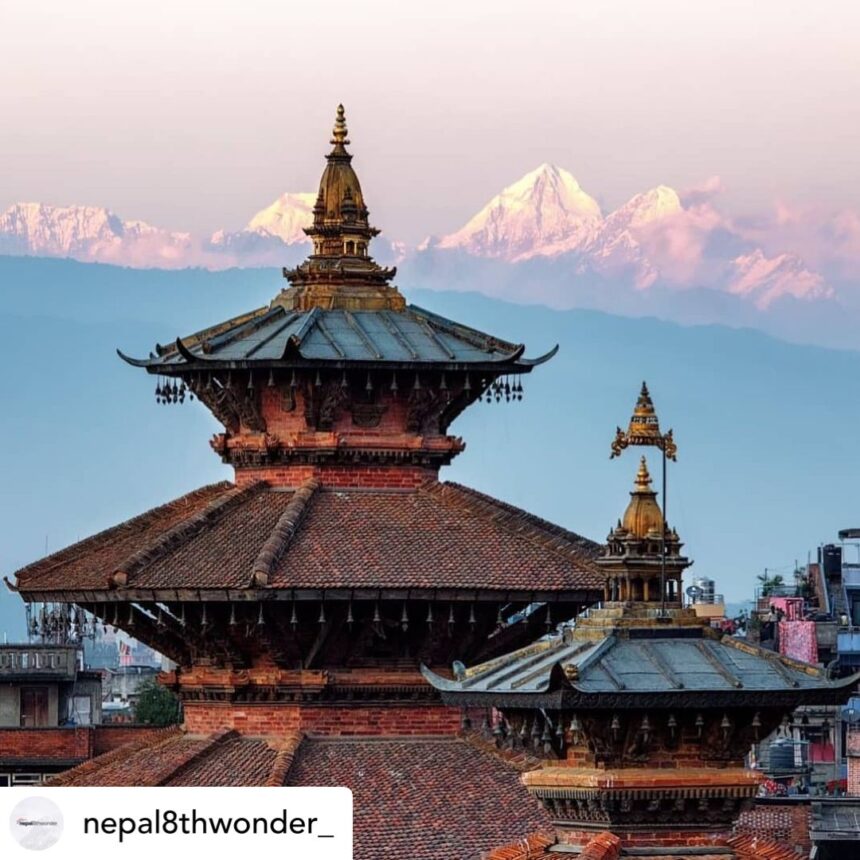Introduction
Located on the banks of the sacred Bagmati River in Kathmandu, Nepal, Pashupatinath Temple is one of the most revered Hindu temples dedicated to Lord Shiva. Known for its ornate architecture, spiritual significance, and rich cultural heritage, it attracts pilgrims, tourists, and spiritual seekers from around the world.
- Introduction
- History of Pashupatinath Temple
- Fascinating Facts About Pashupatinath Temple
- Timeline of Pashupatinath Temple
- Significance of Pashupatinath Temple
- Observance & Rituals
- Wishing at Pashupatinath
- Daily Life Impact
- FAQs About Pashupatinath Temple
- Important Tips for Visitors
- Importance in Society
- Conclusion
For those seeking cheap vacation ideas in Nepal, Pashupatinath is a must-visit destination that combines divine experience, cultural immersion, and breathtaking views.
This article explores history, fascinating facts, timeline, significance, observance, wishing, FAQs, daily life impact, and societal importance—all presented in a human-friendly, engaging style.
History of Pashupatinath Temple
Origins: Believed to have existed since 400 CE, Pashupatinath is one of the oldest Hindu temples in the world.
Development: Over centuries, it has undergone renovations and expansions by Nepali kings, devotees, and patrons from India.
UNESCO Recognition: The temple complex is a UNESCO World Heritage Site, acknowledging its cultural, historical, and religious significance.
Spiritual Tradition: Dedicated to Lord Shiva as Pashupati (Lord of Animals), it is considered a holiest place for performing rituals and cremations in the Hindu faith.
Fascinating Facts About Pashupatinath Temple
Architectural Marvel: The temple is built in Nepalese pagoda style with gold-plated roofs and intricately carved wooden doors.
Sacred Bagmati River: Hindus believe that the river purifies sins, making cremation rituals at Pashupatinath spiritually significant.
Cultural Hub: The temple is surrounded by ashams, monasteries, and shrines that reflect Nepalese culture.
Pilgrimage Center: Thousands of pilgrims visit daily, especially during Maha Shivaratri, a major festival honoring Lord Shiva.
Strict Rituals: Non-Hindus are restricted from entering the main sanctum, but can explore the temple grounds and witness ceremonies.
Cremation Ghats: The temple has open-air cremation ghats, where traditional Hindu rituals are performed with reverence.
Spiritual Energy: Devotees believe that visiting Pashupatinath brings blessings, liberation, and spiritual fulfillment.
Timeline of Pashupatinath Temple
400 CE: Earliest mentions and construction of the temple.
12th–16th Century: Renovations by Nepali kings and foreign patrons.
20th Century: Gold-plated roofs added; temple complex expanded.
1979: UNESCO World Heritage designation.
Present: Functions as an active temple, pilgrimage site, and cultural landmark.
Significance of Pashupatinath Temple
1. Religious Significance
Pashupatinath is one of the 12 Jyotirlingas of Lord Shiva, making it a pivotal site for Hindus worldwide. Pilgrims come to seek blessings, spiritual purification, and salvation.
2. Cultural Importance
The temple complex is a living museum of Nepalese art, architecture, and rituals, preserving centuries-old traditions.
3. Social & Community Role
The temple supports local priests, artisans, and devotees, contributing to the social fabric of Kathmandu.
4. Tourism & Economy
Visitors to Pashupatinath boost local businesses, hotels, guides, and handicraft markets, supporting sustainable tourism.
Observance & Rituals
Daily Puja: Priests perform daily worship of Lord Shiva with offerings, prayers, and ceremonial rituals.
Maha Shivaratri Festival: A major event attracting thousands of pilgrims with night-long worship, processions, and cultural programs.
Cremation Rites: Hindu cremation ceremonies on the Bagmati River ghats are observed with strict rituals, emphasizing the cycle of life and death.
Special Pilgrimages: Devotees visit during auspicious days like Shivaratri, Teej, and Sawan Mondays.
Wishing at Pashupatinath
Visitors and devotees often make wishes while offering flowers, milk, and incense:
🕉️ “May Lord Shiva bless me with wisdom, strength, and inner peace.”
🌸 “Wishing for the well-being of my family and prosperity in life.”
🔥 “May my spiritual journey lead me to liberation and self-realization.”
These acts of devotion combine faith, hope, and mindfulness, connecting visitors to a larger spiritual purpose.
Daily Life Impact
Pashupatinath Temple significantly influences both locals and visitors:
For Devotees: Provides a sense of spiritual grounding, peace, and cultural identity.
For Local Communities: Offers livelihoods through priest services, crafts, rituals, and tourism-related jobs.
For Society: Encourages religious tolerance, cultural preservation, and ethical conduct.
The temple’s presence fosters a sense of community cohesion and shared values in Kathmandu.
FAQs About Pashupatinath Temple
Q1: Can non-Hindus enter the main temple?
A: No, only Hindus can enter the sanctum. Non-Hindus can explore temple grounds and ghats.
Q2: What is the best time to visit?
A: Early morning or late afternoon for peaceful exploration and observing rituals.
Q3: Are there any fees for entry?
A: Minimal entry fees apply for foreigners, supporting temple maintenance.
Q4: Can visitors witness cremation ceremonies?
A: Yes, from a respectful distance at the ghats along the Bagmati River.
Q5: How long should one spend at Pashupatinath?
A: 2–4 hours to fully experience the temple, ghats, and cultural surroundings.
Important Tips for Visitors
Dress modestly to respect religious customs.
Maintain silence and decorum around the sanctum and cremation ghats.
Carry water and a hat for daytime visits.
Hire a local guide to understand rituals, history, and significance.
Avoid littering and help preserve the sacred environment.
Importance in Society
Pashupatinath Temple plays a vital role in religious, cultural, and social life:
Spiritual Center: Offers devotees a place for prayer, reflection, and spiritual growth.
Cultural Preservation: Maintains traditional architecture, rituals, and festivals.
Economic Impact: Supports livelihoods of priests, artisans, and tourism-related businesses.
Educational Value: Provides insight into Hindu philosophy, rituals, and Nepalese history.
Social Harmony: Encourages reverence, respect, and understanding among visitors and communities.
Conclusion
Pashupatinath Temple is more than a religious site—it is a living symbol of spirituality, culture, and heritage. Its sacred architecture, flowing Bagmati River, and centuries-old rituals create an experience that is transformative for both locals and visitors.
🌺 Wishing for You: May your visit to Pashupatinath Temple bring blessings, inner peace, and a deeper understanding of life, culture, and spirituality. Let the sacred energy of Lord Shiva guide you toward wisdom, compassion, and harmony in daily life.








